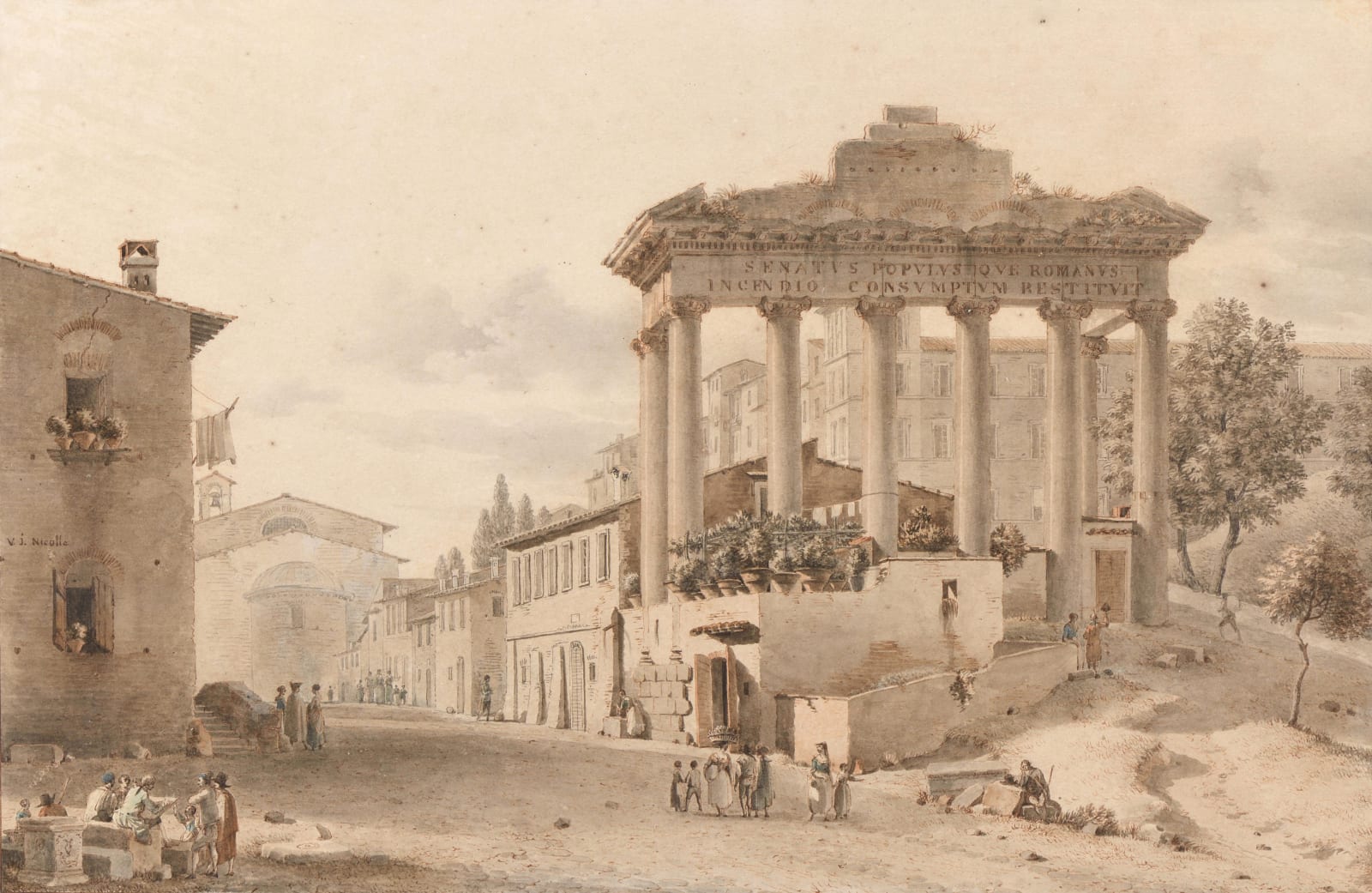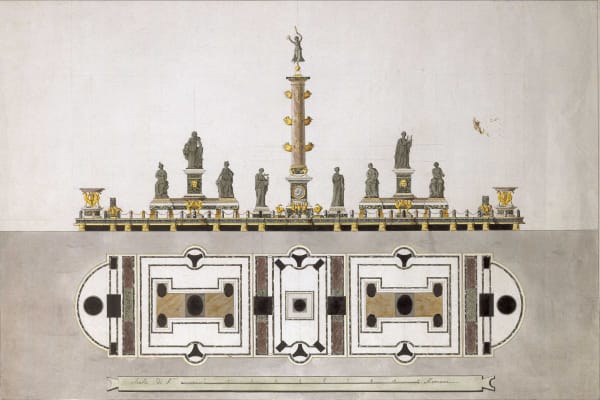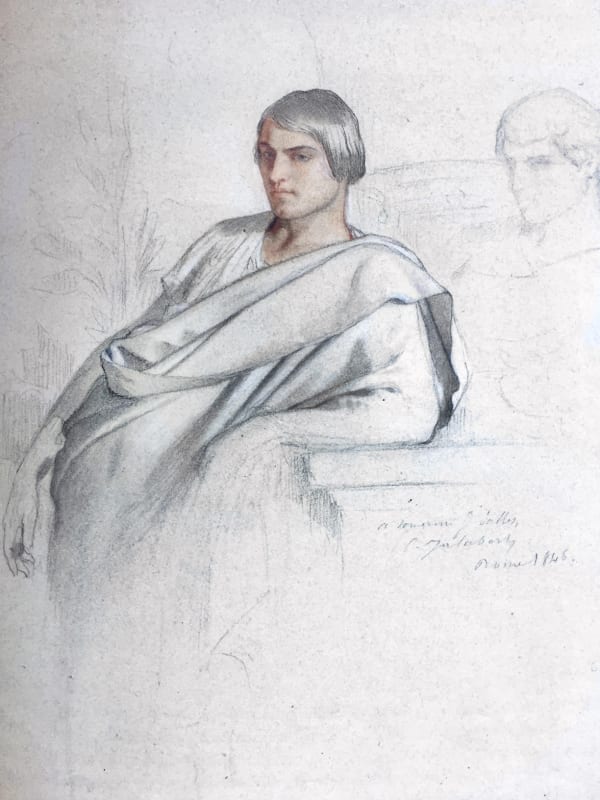
VICTOR-JEAN NICOLLE PARIS, 1754-1826
Born in Paris and a great traveller, Victor-Jean Nicolle was a fine water-colourist specialised in urban landscapes animated by random characters. The monuments architecture rendering’s detail turns his artworks in precious proofs of the villas and ruins’ state at the time he drew them. Nicolle followed courses at the School of drawing, where he was rewarded the Gran Premio for Perspective in 1771, before starting his apprenticeship under architect Petit-Raphael’s direction. Most of his career developed in Italy, where he stayed at least twice, the first time from 1787 to 1798 circa, and the second one from 1806 to 1811. During his travelling to Rome, Venice, Florence and Naples, Nicolle has been highly prolific producing a multitude of picturesque landscapes and ruins’ viewings, most of them painted with watercolours.
The view here presented shows the remaining columns of the Temple of Saturn, the third most ancient sacred place in Rome after the Temple of Vesta and the Temple of Jupiter, built in the Roman Forum during the early Republican age.
At the foot of Campidoglio, located southwest of imperial Rostra, its present aspect is the result of restorations ordered by Lucius Munatius Plancus and then by the Senate after the fire occurred in 283 after Christ. It is thanks to the latter restoration if the beholder can see what remains: the eight grey granite columns with white marble Ionic capitals, the architrave decorated on the internal face with a relief palmette motif and the main pediment, mostly built by means of salvaged materials. The inscription on the frieze reminds of a restoration made after a fire: SENATUS POPULUSQUE ROMANUS INCENDIO CONSUMPTUM RESTITUIT, that is “The Senate and the Roman people restored (the temple) ruined by a fire”.
Still now the imposing podium is impressive by its present height as a result of the restoration Munatius Plancus ordered in 42 before Christ and paid by the booty he had gained with his victory over the Raeti. The podium, made by opus caementicium, was entirely covered by travertino, and the door leading to treasury and archives rooms was on its east side. The temple was built over the podium and reachable by a large stairway Lucius Munatius commissioned in order to enter a forepart and then the room where Saturn’s statue was placed.
Join the mailing list
Subscribe to our newsletter to receive all the news about exhibitions, fairs and new acquisitions!


